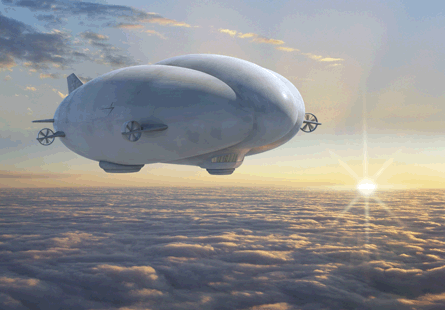Nearly four years after botching its attempt to replace its ageing signals intelligence platform, the US Army has regrouped with a new strategy to recapitalise all of its intelligence, surveillance and reconnaissance ISR aircraft with a mix of five platforms anchored by a new design for a long-endurance, hybrid airship.
The strategy, revealed in newly published army planning documents, also proposes to revive the cancelled Aerial Common Sensor programme with a turboprop in the class of the Bombardier Q400, and launch a new programme to acquire more Beechcraft MC-12Ws.
The plan also includes fielding two different unmanned aircraft systems. Army briefing slides posted on 2 September show the AAI RQ-7 Shadow UAS representing a small class, and a General Atomics MQ-1C Sky Warrior representing a larger type.
However, Jim Quinn, a Lockheed Martin vice-president, says he understands that army officials want to buy the Boeing A160 Hummingbird - a long-endurance, unmanned helicopter - to fill the large UAS requirement.
 |
|---|
© Lockheed Martin |
Dick Damron, a manager for Boeing advanced rotorcraft systems, says he has heard similar talk about the A160's potential role. But Damron adds that the army has not officially contacted Boeing about the issue.
The centrepiece of the army's envisaged fleet of imagery and signals intelligence collectors would be a 76.2m (250ft)-long hybrid airship called the long-endurance multi-intelligence vehicle (LEMV).
As proposed in army requirements documents, the LEMV is potentially capable of lifting a 2,270kg (5,000lb) payload up to 20,000ft (6,100m) for up to three weeks. An industry consortium has formed to deliver the first system within 18 months. The airframe could be supplied by Lockheed Martin's Skunk Works division, which demonstrated a roughly half-scale prototype called the P791 in 2006.
The army's space and missile defence command is expected to soon issue a request for proposals for the LEMV airframe supplier. The competitors include Lockheed and UK-based Hybrid Air Vehicles.
The five-layer concept shows the army has revived its ambitions to recapitalise its airborne ISR fleet after the ACS debacle. The army cancelled the contract with Lockheed in January 2006 after the payload grew too large for the selected platform - the Embraer ERJ-145 regional jet.
But the new strategy also faces sharp criticism by the US Senate, which has voted to eliminate a $210 million funding request for fiscal year 2010 to launch the ACS competition. The final defence budget is still being debated by both houses of Congress.
The senate's version of the FY2010 defence authorisation bill also criticised the LEMV concept for being too premature, although the senators did not reduce the programme's funding levels.
Source: Flight International
















